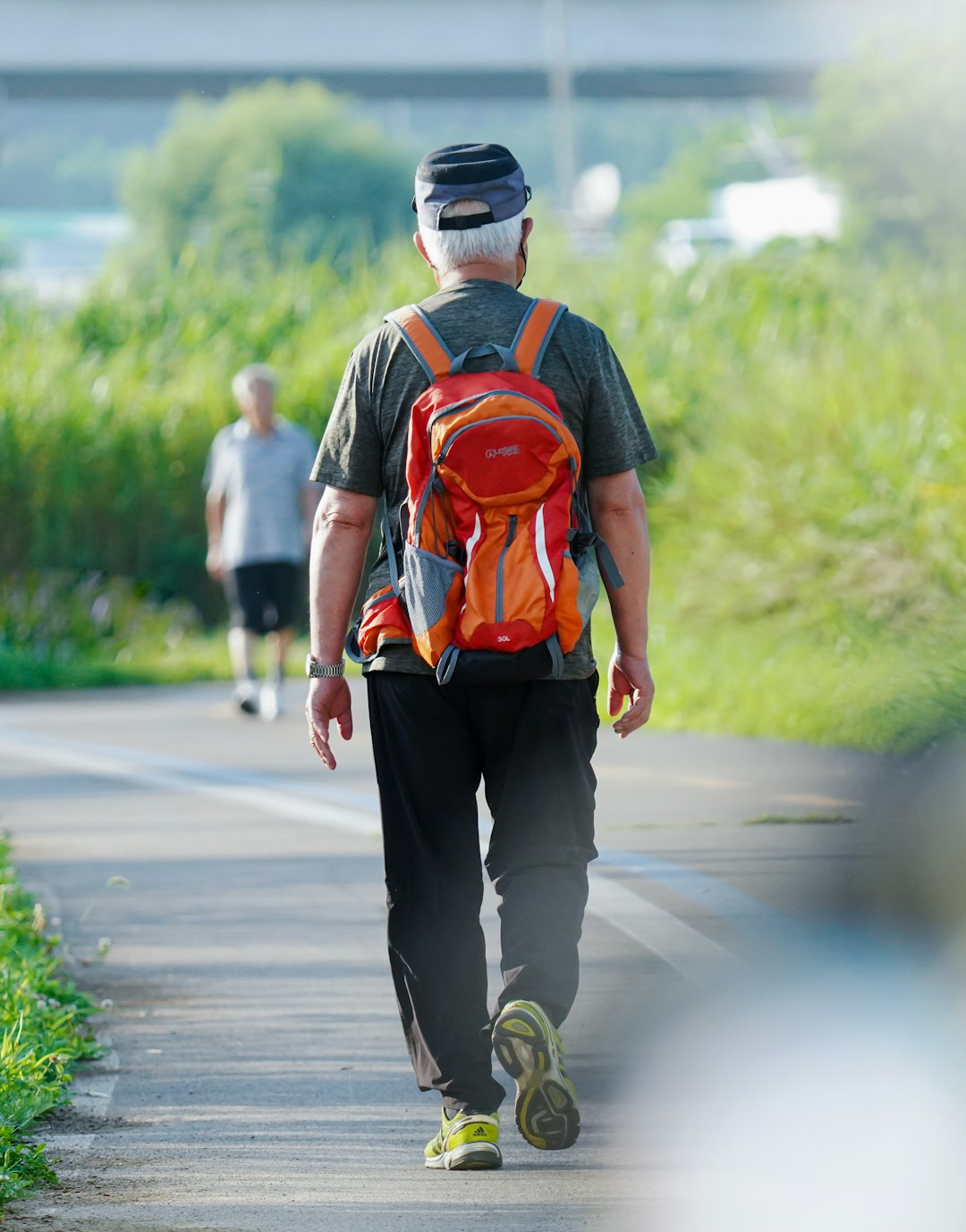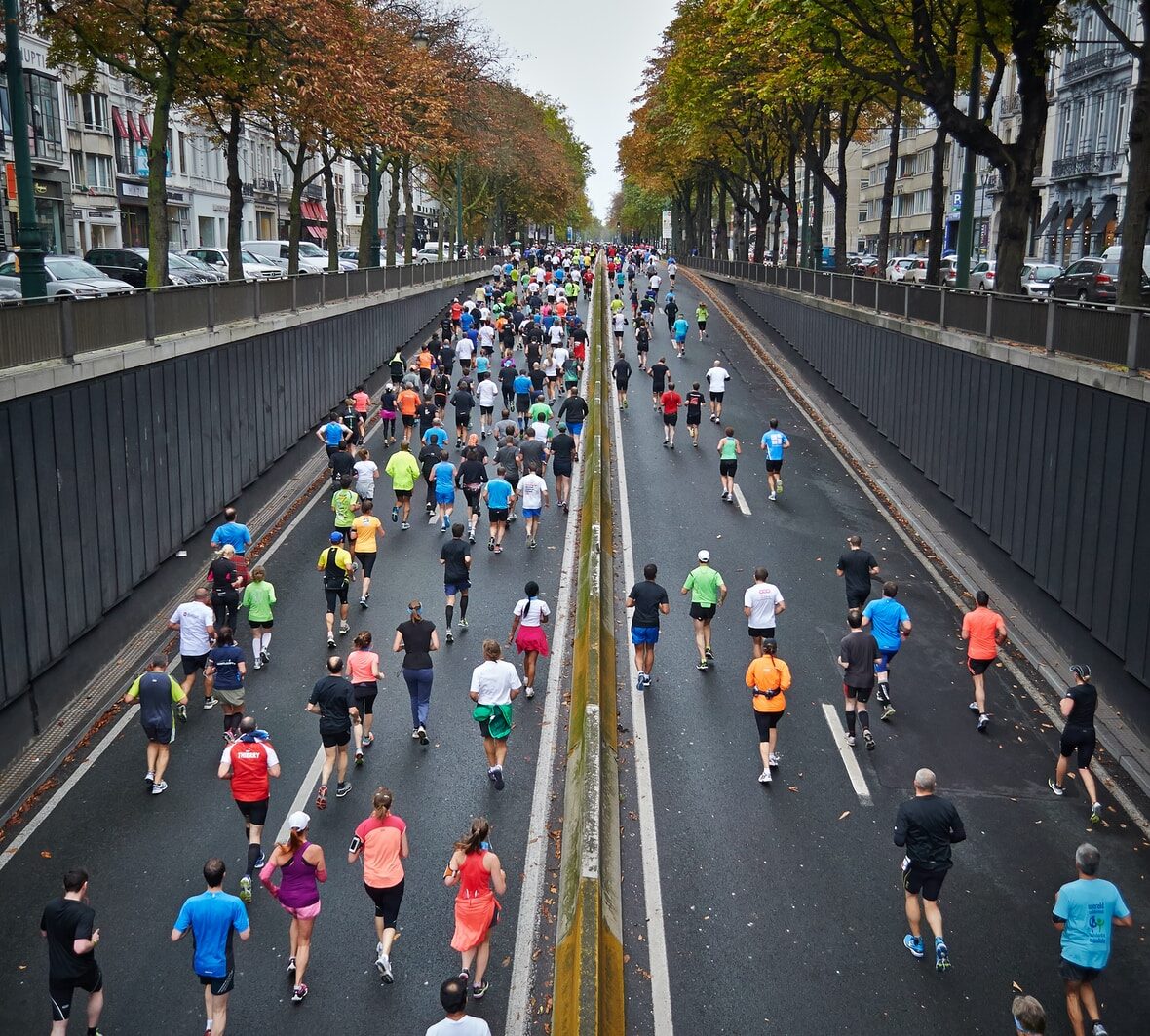Ever wondered if your daily stroll is enough to shed those stubborn pounds? Or maybe you’ve heard the magic number “10,000 steps” tossed around but aren’t sure if it really works for weight loss. At Walkathon Benefits™, we’ve guided thousands through the ins and outs of walking for health and weight loss — and spoiler alert: it’s not just about the number of steps, but how you walk them. In this article, we’ll unravel the science, bust myths, and share 12 expert strategies to help you walk your way to a healthier, lighter you in 2025.
Here’s a little teaser: did you know that walking briskly uphill for just a few minutes can burn nearly twice the calories of a flat stroll? Stick around, because we’ll show you how to turn your everyday walk into a fat-burning powerhouse — no gym required!
Key Takeaways
- Aim for at least 30 minutes of brisk walking most days to create a calorie deficit that supports weight loss.
- Quality beats quantity: Intensity, pace, and terrain matter more than just hitting a step count.
- The popular 10,000-step goal is a helpful target but not a strict rule; even 7,000 steps can be effective.
- Consistency and pairing walking with a balanced diet are essential for lasting results.
- Use wearables like Fitbit Charge 5 or apps like NHS Active 10 to track progress and stay motivated.
- Consider joining community walkathons for social support and extra motivation.
Ready to gear up? Check out our recommended walking shoes, trackers, and hydration gear to make every step count:
- Walking Shoes: Brooks Ghost on Amazon | Brooks Official Website
- Fitness Trackers: Fitbit Charge 5 on Amazon | Fitbit Official Website
- Hydration Gear: Hydro Flask on Amazon | Hydro Flask Official Website
Table of Contents
- ⚡️ Quick Tips and Facts
- 🚶♀️ The History of Walking for Health & Weight Loss: A Timeless Strategy
- 🎯 The Golden Question: How Long Should You Walk a Day to Lose Weight?
- 📈 Understanding Calorie Deficit: The Math Behind Walking for Weight Loss
- ⏱️ How Many Steps Do You REALLY Need? Debunking the 10,000-Step Myth
- 🔥 Boosting Your Burn: Intensity, Pace, and Terrain for Maximum Fat Loss
- 🗓️ Consistency is Key: Building a Sustainable Walking Routine for Lasting Results
- 💖 Beyond the Scale: Surprising Health Benefits of Daily Walking
- 🍎 Fueling Your Walks: Nutrition Strategies for Optimal Weight Loss
- 👟 Gear Up! Essential Walking Equipment for Comfort and Performance
- 💪 Staying Motivated: Overcoming Plateaus and Sticking to Your Goals
- 📊 Tracking Your Journey: Apps, Wearables, and Measuring Success
- ❌ Common Walking Mistakes That Hinder Weight Loss (And How to Fix Them!)
- 🚀 Our Top 7 Strategies for Walking Weight Loss: Actionable Tips for Success
- 🏡 Integrating Walking into a Busy Lifestyle: Practical Tips for Everyday Movement
- 🤰 Walking for Weight Loss Post-Pregnancy: A Gentle and Effective Approach
- 👴 Walking for Weight Loss for Seniors: Safe and Effective Strategies
- ♿️ Adaptive Walking: Making Movement Accessible for Everyone
- 🩺 When to Consult a Professional: Doctors, Dietitians, and Trainers on Your Weight Loss Journey
- ✅ Conclusion: Your Path to a Lighter, Healthier You
- 🔗 Recommended Links & Resources
- ❓ Frequently Asked Questions (FAQ)
- 📚 Reference Links & Scientific Sources
⚡️ Quick Tips and Facts
Welcome to your go-to guide on how long you should walk a day to lose weight! Whether you’re a casual stroller or a dedicated walker, we at Walkathon Benefits™ have got your back with expert insights and practical tips. Before we dive deep, here are some quick nuggets to get you started:
- Walking burns calories: A brisk 30-minute walk can burn about 150-300 calories depending on your weight and pace (Mayo Clinic).
- Aim for 150 minutes per week: That’s about 30 minutes a day, 5 days a week, to meet general health guidelines.
- 10,000 steps is a great target but not a magic number. Even 7,000 steps can help with weight loss if combined with a good diet.
- Intensity matters: Walking faster or adding hills burns more calories.
- Consistency beats intensity: Regular daily walks beat sporadic marathon strolls.
- Diet is your partner: Walking alone won’t melt pounds if your calorie intake is high.
- Break it up: Two 15-minute walks can be as effective as one 30-minute walk.
- Use tech: Apps like NHS’s Active 10 or Fitbit help track progress and keep motivation high.
For a detailed walk-through, check out our related article on How long should you walk a day?. Ready to lace up? Let’s stroll into the history and science behind walking for weight loss!
🚶♀️ The History of Walking for Health & Weight Loss: A Timeless Strategy

Walking is humanity’s oldest exercise — no gym membership needed! From ancient civilizations to modern health trends, walking has been a cornerstone of physical activity.
Walking Through Time
- Ancient roots: Early humans walked miles daily for survival, naturally maintaining fitness.
- 19th-century health craze: The “walking movement” emerged in Europe and America as a means to improve health and mental well-being.
- Modern medicine: Today, walking is prescribed by doctors worldwide for weight management, cardiovascular health, and mental wellness.
At Walkathon Benefits™, we’ve seen firsthand how community walkathons revive this tradition, blending social fun with fitness. Walking is not just exercise; it’s a lifestyle.
🎯 The Golden Question: How Long Should You Walk a Day to Lose Weight?
Let’s get to the heart of the matter: How long should you walk daily to shed pounds?
What Experts Say
- The Mayo Clinic recommends at least 150 minutes of moderate aerobic activity weekly, which breaks down to about 30 minutes a day, 5 days a week.
- The NHS suggests starting with a brisk 10-minute walk daily, gradually increasing duration and intensity.
- According to dietitian Tami Smith (EatingWell), walking 4 times a week for 50 minutes at moderate to vigorous intensity can reduce body weight and belly fat.
Our Take
- Start small if you’re new: even 10-15 minutes daily.
- Build up to 30-60 minutes for noticeable weight loss.
- Consistency is more important than duration alone.
- Pair walking with a balanced diet for best results.
📈 Understanding Calorie Deficit: The Math Behind Walking for Weight Loss
Weight loss boils down to burning more calories than you consume — that’s the calorie deficit principle.
How Walking Fits In
- Walking burns calories based on your weight, pace, and duration.
- For example, a 155-pound person burns roughly 140 calories walking 2 mph for 1 hour, and about 267 calories at 3.5 mph (EatingWell).
- To lose 1 pound, you need a deficit of about 3,500 calories.
- Walking 10,000 steps (~5 miles) burns approximately 400-500 calories depending on your weight.
Calorie Burn Table by Pace (155-pound person)
| Pace (mph) | Calories Burned (1 hour) | Description |
|---|---|---|
| 2.0 | 140 | Leisurely stroll |
| 3.0 | 232 | Moderate pace |
| 3.5 | 267 | Brisk walk |
| 4.0 | 351 | Very brisk |
| 5.0 | 632 | Fast pace / power walk |
Pro Tip
Pair your walking with mindful eating to create a sustainable calorie deficit. Check out our Physical Fitness Tips for more on nutrition and exercise synergy.
⏱️ How Many Steps Do You REALLY Need? Debunking the 10,000-Step Myth
Ah, the famous 10,000-step goal — catchy, but is it gospel? Let’s bust some myths!
Origins of 10,000 Steps
- The 10,000-step target originated from a 1960s Japanese marketing campaign for a pedometer, not scientific research.
- Recent studies show benefits even at 7,000-8,000 steps per day for weight loss and health (NHS).
What’s Realistic?
- Beginners can start with 5,000 steps and gradually increase.
- For weight loss, aim for 7,000 to 12,000 steps daily, depending on your fitness level.
- Quality beats quantity: brisk walking and intervals burn more calories than slow, aimless steps.
Our Experience
We’ve seen participants in community walkathons hit 8,000 steps and still lose weight effectively when combined with good nutrition and consistency. So, don’t stress the number — focus on movement that feels good and sustainable.
🔥 Boosting Your Burn: Intensity, Pace, and Terrain for Maximum Fat Loss
Want to supercharge your walking workouts? It’s all about intensity and variety.
How to Turn Up the Heat
- Increase pace: Moving from a casual stroll (2 mph) to a brisk walk (3.5 mph) can increase calorie burn by up to 90% (EatingWell).
- Add hills or inclines: Walking uphill engages more muscles and raises your heart rate.
- Interval walking: Alternate between fast bursts and slower recovery periods.
- Use weights: Light ankle or wrist weights can increase resistance, but beware of injury risk.
Terrain Matters
- Trails, parks, and uneven surfaces engage stabilizing muscles.
- Treadmills offer controlled environments but can be less engaging.
Our Favorite Tip
Try a hill interval walk: warm up 5 minutes, then alternate 1 minute uphill fast walk with 2 minutes flat recovery, repeat 5 times, cool down 5 minutes. It’s a calorie-torching game changer!
🗓️ Consistency is Key: Building a Sustainable Walking Routine for Lasting Results
Walking for weight loss isn’t a sprint — it’s a marathon. Here’s how to build a routine that sticks:
Step-by-Step Routine Building
- Set realistic goals: Start with 10-15 minutes daily.
- Schedule your walks: Same time each day builds habit.
- Mix it up: Vary routes and paces to keep it fun.
- Track progress: Use apps or pedometers.
- Reward yourself: Celebrate milestones with non-food treats.
- Buddy up: Join a walking group or find a friend.
- Listen to your body: Rest when needed to avoid burnout.
Why Consistency Wins
Studies show people who maintain weight loss engage in regular physical activity (Mayo Clinic). Even moderate daily walking adds up over time.
💖 Beyond the Scale: Surprising Health Benefits of Daily Walking
Weight loss is fantastic, but walking gifts you so much more:
- Improves cardiovascular health: Lowers blood pressure and cholesterol.
- Boosts mood and mental health: Releases endorphins, reduces anxiety.
- Strengthens bones and muscles: Helps prevent osteoporosis.
- Enhances sleep quality.
- Supports joint health: Low-impact movement reduces arthritis pain.
- Improves digestion and metabolism.
Walking is a holistic health champion — and that’s why we at Walkathon Benefits™ promote it for communities and individuals alike. Curious about more health perks? Explore our Health Benefits of Walking section.
🍎 Fueling Your Walks: Nutrition Strategies for Optimal Weight Loss
You can’t out-walk a bad diet — so let’s fuel your strides smartly!
Nutrition Tips
- Eat a balanced diet rich in fruits, vegetables, whole grains, and lean proteins (Mayo Clinic).
- Hydrate well before, during, and after walks.
- Avoid empty calories: Limit sugary drinks and processed snacks.
- Pre-walk snack: A small banana or handful of nuts can boost energy.
- Post-walk meal: Include protein and complex carbs for recovery.
- Watch portions: Even healthy foods can stall weight loss if overeaten.
Our Anecdote
One of our team members combined daily 45-minute walks with mindful eating and lost 15 pounds in 3 months — no fad diets, just consistency and smart fuel.
👟 Gear Up! Essential Walking Equipment for Comfort and Performance
Walking might be simple, but the right gear makes a world of difference.
Must-Have Walking Gear
| Item | Why It Matters | Recommended Brands & Links |
|---|---|---|
| Walking Shoes | Support, cushioning, injury prevention | Brooks Ghost, ASICS Gel-Nimbus |
| Moisture-wicking Socks | Prevent blisters and keep feet dry | Balega, Thorlo |
| Comfortable Clothing | Breathable, weather-appropriate | Under Armour, Nike Dri-FIT |
| Fitness Tracker | Track steps, heart rate, calories | Fitbit Charge 5, Garmin Vivosmart 5 |
| Water Bottle | Stay hydrated | Hydro Flask, Nalgene |
| Reflective Gear | Safety for night or early walks | Nathan Streak Reflective Vest |
Shop Walking Gear on:
- Brooks Shoes: Amazon | Brooks Official Website
- Fitbit Trackers: Amazon | Fitbit Official Website
- Hydro Flask Bottles: Amazon | Hydro Flask Official Website
💪 Staying Motivated: Overcoming Plateaus and Sticking to Your Goals
Weight loss journeys have ups and downs — here’s how to keep your walking mojo alive:
Tips to Stay on Track
- Set mini-goals: Celebrate every 1,000 steps or extra 5 minutes.
- Change scenery: Explore new trails or parks.
- Join a group: Social support boosts accountability.
- Mix it up: Add music, podcasts, or audiobooks.
- Track progress visually: Charts and apps show your wins.
- Reward yourself: New shoes, a massage, or a movie night.
- Listen to your body: Rest days prevent burnout and injury.
Breaking Plateaus
- Increase walking intensity or duration.
- Add strength training twice a week.
- Reassess your diet for hidden calories.
- Consult a professional if stuck.
📊 Tracking Your Journey: Apps, Wearables, and Measuring Success
You can’t improve what you don’t measure! Tracking tools keep you honest and motivated.
Top Tracking Tools
| Tool/App | Features | Best For |
|---|---|---|
| Fitbit Charge 5 | Steps, heart rate, sleep, GPS | Comprehensive fitness tracking |
| NHS Active 10 App | Brisk walking tracker, goals, rewards | Beginners focusing on brisk walks |
| Apple Watch | Health metrics, reminders, apps | iPhone users wanting all-in-one |
| MapMyWalk | Route mapping, social sharing | Outdoor walkers and runners |
| Pacer | Step counting, challenges | Social motivation |
Why Track?
- Monitor progress toward step and calorie goals.
- Identify patterns and plateaus.
- Stay motivated with rewards and challenges.
- Share achievements with friends or groups.
❌ Common Walking Mistakes That Hinder Weight Loss (And How to Fix Them!)
Even the best intentions can be tripped up by common pitfalls. Here’s what to watch out for:
Mistakes & Fixes
| Mistake | Why It Hurts | How to Fix It |
|---|---|---|
| Walking too slowly | Burns fewer calories | Increase pace; aim for brisk walking |
| Inconsistent routine | Limits progress | Schedule walks; build habit |
| Ignoring diet | Overeating cancels calorie burn | Pair walking with healthy eating |
| Wearing improper shoes | Causes injury and discomfort | Invest in quality walking shoes |
| Skipping warm-up or cool-down | Increases injury risk | Stretch before and after walks |
| Not tracking progress | Hard to stay motivated | Use apps or pedometers |
| Overdoing it without rest | Leads to burnout or injury | Incorporate rest days |
🚀 Our Top 7 Strategies for Walking Weight Loss: Actionable Tips for Success
Ready for our expert-approved, no-nonsense strategies to maximize your walking weight loss?
- Start with a plan: Use beginner or intermediate walking plans like those from Tami Smith or Brett Durney (EatingWell).
- Mix intensity: Include brisk walks, hills, and intervals.
- Break it up: Two shorter walks can be more effective than one long session.
- Track your steps and calories: Use Fitbit, Apple Watch, or NHS Active 10.
- Pair with healthy eating: Focus on whole foods and portion control.
- Stay consistent: Make walking a daily habit.
- Join community walkathons: Social support boosts motivation and fun (Community Engagement).
🏡 Integrating Walking into a Busy Lifestyle: Practical Tips for Everyday Movement
No time? No problem! Here’s how to sneak walking into your busy day:
- Walk or bike to work or errands.
- Take stairs instead of elevators.
- Park farther from entrances.
- Use walking meetings or phone calls.
- Walk your dog or kids.
- Schedule “walking breaks” during work.
- Join local walking groups or community events.
Small changes add up — and we’ve seen busy professionals transform their health with these hacks.
🤰 Walking for Weight Loss Post-Pregnancy: A Gentle and Effective Approach
New moms, walking is your friend! It’s low-impact, mood-boosting, and helps shed baby weight safely.
Tips for Postpartum Walking
- Get doctor’s clearance first.
- Start with short, slow walks.
- Use supportive shoes and a stroller.
- Listen to your body; rest if tired.
- Combine with pelvic floor exercises.
- Gradually increase duration and pace.
Walking post-pregnancy supports recovery and mental health, making it a win-win.
👴 Walking for Weight Loss for Seniors: Safe and Effective Strategies
Walking is ideal for seniors aiming to lose weight and improve mobility.
Senior-Friendly Tips
- Consult healthcare providers before starting.
- Use supportive footwear and walking aids if needed.
- Start with short, flat walks.
- Incorporate balance and strength exercises.
- Stay hydrated and avoid extreme weather.
- Join senior walking groups for social support.
Walking enhances independence and quality of life for older adults.
♿️ Adaptive Walking: Making Movement Accessible for Everyone
At Walkathon Benefits™, we believe walking is for all bodies and abilities.
Adaptive Walking Options
- Use of mobility aids like walkers or canes.
- Wheelchair-accessible walking paths.
- Seated marching or arm cycling for limited mobility.
- Community programs tailored for adaptive participants.
- Inclusive walkathons promoting accessibility.
Movement is medicine — let’s make it inclusive!
🩺 When to Consult a Professional: Doctors, Dietitians, and Trainers on Your Weight Loss Journey
Walking is safe for most, but sometimes expert guidance is key.
When to Seek Help
- If you have chronic conditions (heart disease, diabetes).
- Experience pain or injury during walking.
- Need personalized diet or exercise plans.
- Want to break through weight loss plateaus.
- Require motivation and accountability support.
Professionals like physical therapists, registered dietitians, and certified trainers can tailor your plan safely and effectively.
✅ Conclusion: Your Path to a Lighter, Healthier You

So, how long should you walk a day to lose weight? The answer isn’t one-size-fits-all, but the science and our experience at Walkathon Benefits™ point to a sweet spot: aim for at least 30 minutes of brisk walking most days of the week, gradually building up to 45-60 minutes if your schedule allows. Remember, consistency, intensity, and pairing your walks with a balanced diet are your secret weapons.
We busted the 10,000-step myth, showing that even 7,000 to 8,000 steps can be effective when done regularly and with purpose. Adding hills, intervals, or brisk paces turbocharges calorie burn, while tracking your progress with apps or wearables keeps motivation high.
Walking is more than just weight loss—it’s a holistic health booster, mood lifter, and social connector. Whether you’re a new mom, a senior, or someone looking to reclaim fitness, walking offers an accessible, adaptable path to better health.
If you’re ready to take your walking journey to the next level, consider joining a community walkathon. The camaraderie, motivation, and fun factor are unbeatable. Plus, it’s a fantastic way to give back and engage socially.
So lace up those shoes, grab your favorite playlist or podcast, and step into a healthier, happier you. Your body—and mind—will thank you!
🔗 Recommended Links & Resources
Ready to gear up and get moving? Here are some of our top picks for walking essentials and helpful reads:
- Brooks Ghost Walking Shoes:
Amazon | Brooks Official Website - Fitbit Charge 5 Fitness Tracker:
Amazon | Fitbit Official Website - Hydro Flask Water Bottles:
Amazon | Hydro Flask Official Website - NHS Active 10 App:
NHS Active 10 - Recommended Books:
❓ Frequently Asked Questions (FAQ)

What is the ideal daily step count for weight loss?
The ideal step count varies by individual, but research and expert guidelines suggest 7,000 to 12,000 steps per day are effective for weight loss when combined with a healthy diet. While 10,000 steps is a popular benchmark, it’s not a magic number. Beginners can start lower and gradually increase steps to avoid injury and build stamina. The key is consistent movement that raises your heart rate and burns calories.
Read more about “12 Incredible Benefits of Walking Exercise You Need to Know in 2025 🚶♀️”
How does walking regularly impact overall health and wellbeing?
Regular walking improves cardiovascular health by lowering blood pressure and cholesterol, boosts mood through endorphin release, supports joint and bone health, enhances sleep quality, and reduces risks of chronic diseases like type 2 diabetes and certain cancers. It also aids mental health by reducing anxiety and depression symptoms. Walking is a low-impact, accessible exercise that benefits nearly every aspect of physical and mental wellbeing.
Read more about “Is 1 Hour Walking a Day Enough? 12 Surprising Truths for 2025 🚶♂️✨”
Can walking alone be enough to lose weight, or should it be combined with other exercises?
Walking alone can lead to weight loss if done consistently at sufficient intensity and paired with a calorie-controlled diet. However, combining walking with strength training and other aerobic exercises can accelerate fat loss, improve muscle tone, and prevent plateaus. Strength training twice a week is recommended to maintain muscle mass, which supports metabolism. So, walking is a fantastic foundation, but a mixed routine yields the best results.
What are the additional benefits of participating in walkathons for weight loss and overall fitness?
Walkathons offer social motivation, accountability, and a sense of community, which can boost adherence to walking routines. They often raise funds for good causes, adding a feel-good factor to your fitness journey. Participating in organized events encourages goal-setting, provides structured training plans, and exposes you to new walking routes and friends. This social and emotional support often translates to better long-term fitness and weight management success.
Read more about “5 Types of Walkathons & Their Distances You Need to Know 🚶♂️ (2025)”
📚 Reference Links & Scientific Sources
- Walking for Health – NHS
- Mayo Clinic: Walking for Weight Loss
- EatingWell: How to Walk Off 10 Pounds
- Fitbit Official Site
- Brooks Running Official Site
- Hydro Flask Official Site
Walking is simple, powerful, and accessible—your best step forward starts today!
